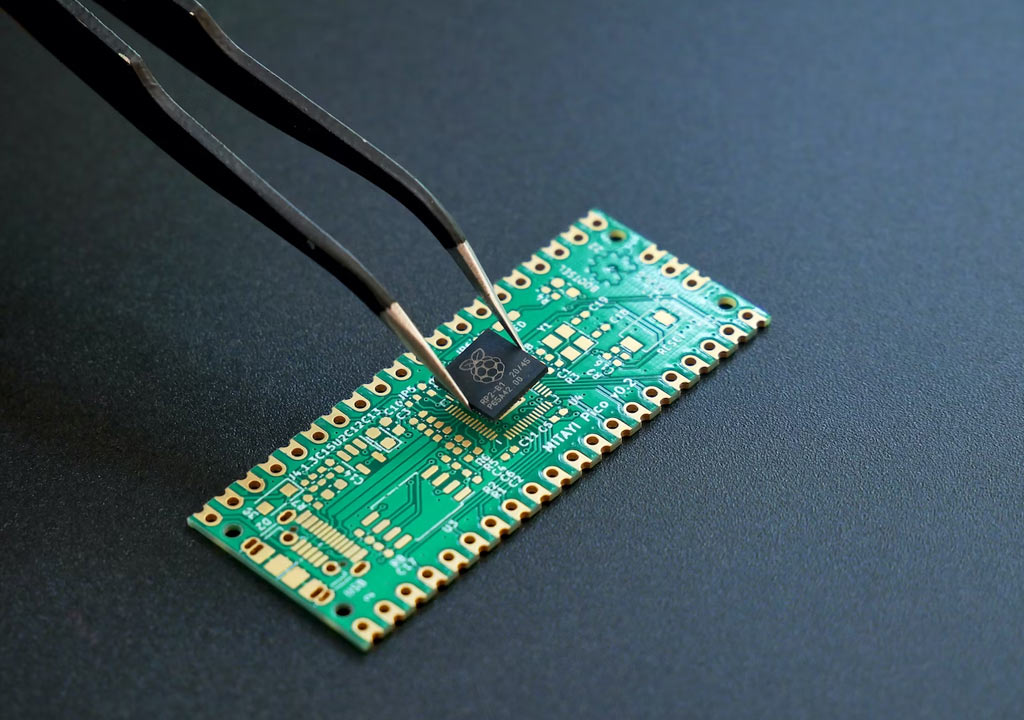In the ever-evolving realm of printed circuit boards (PCBs), selecting the right substrate material is crucial to achieving optimal performance, reliability, and cost-effectiveness. Two commonly used materials in PCB fabrication are Rogers and FR4, each offering unique characteristics and benefits. In this blog post, we’ll delve into the nuances of Rogers PCB and FR4 PCB, shedding light on their differences and helping you make informed decisions for your PCB projects.
Understanding Rogers PCB: Rogers PCB, named after the manufacturer Rogers Corporation, is a high-frequency laminate material prized for its exceptional electrical properties and signal integrity. Composed of specialized dielectric materials such as ceramic-filled PTFE (Polytetrafluoroethylene), Rogers PCBs excel in applications requiring high-frequency performance, low loss tangent, and minimal signal distortion. Commonly used in RF (Radio Frequency) and microwave circuits, Rogers PCBs offer superior impedance control, reduced insertion loss, and enhanced thermal stability, making them ideal for demanding applications in telecommunications, aerospace, and wireless networking.
Exploring FR4 PCB: In contrast, FR4 PCB stands as the industry standard for conventional printed circuit boards, renowned for its affordability, versatility, and widespread availability. FR4, short for Flame Retardant 4, refers to a grade of epoxy laminate material reinforced with woven glass fibers. Widely used in consumer electronics, industrial equipment, and automotive applications, FR4 PCBs offer excellent mechanical strength, electrical insulation, and thermal resistance. While FR4 may not match the high-frequency performance of Rogers PCB, it remains a cost-effective choice for a wide range of low to medium-frequency applications, offering reliable performance and ease of fabrication.
Key Differences Between Rogers PCB and FR4 PCB:
- Frequency Performance: Rogers PCBs are designed for high-frequency applications, offering superior signal integrity and minimal loss tangent compared to FR4 PCBs, which are suitable for low to medium-frequency circuits.
- Dielectric Constant: Rogers PCBs exhibit a stable and precise dielectric constant, ensuring consistent impedance control and signal propagation, whereas FR4 PCBs may experience variations in dielectric constant, impacting signal integrity in high-frequency applications.
- Cost: Rogers PCBs typically command a higher price point compared to FR4 PCBs, reflecting the specialized materials and manufacturing processes involved in their production.
- Application Specificity: Rogers PCBs are tailored for high-performance RF and microwave circuits, while FR4 PCBs find widespread use in general-purpose electronics, where cost-effectiveness and versatility are paramount.
Choosing the Right PCB for Your Application: When selecting between Rogers PCB and FR4 PCB, it’s essential to evaluate your specific application requirements, budget constraints, and performance expectations. While Rogers PCBs offer unparalleled performance in high-frequency applications, they may be cost-prohibitive for certain projects, where FR4 PCBs offer a more practical solution. By carefully weighing the trade-offs between performance, cost, and application suitability, you can make informed decisions that align with your project goals and objectives.
In conclusion, the choice between Rogers PCB and FR4 PCB hinges on a careful assessment of your application’s requirements and performance criteria. Whether you prioritize high-frequency performance, cost-effectiveness, or versatility, PCB Power Market India offers a comprehensive range of substrate materials and fabrication options to meet your unique needs. Contact us today to explore our extensive portfolio of PCB solutions and unlock the potential for innovation and success in your electronic designs.



